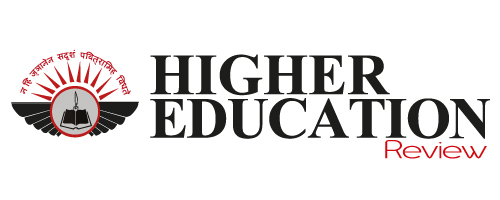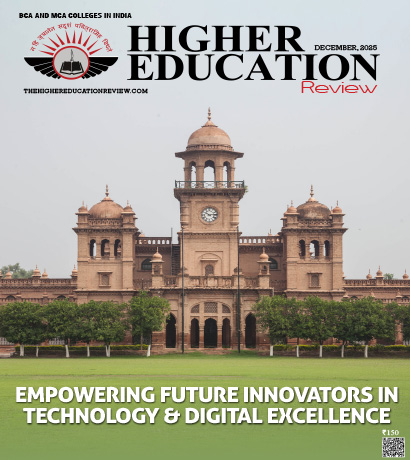The Rise of South Korean Higher Education as an International Education Hub
 Over the last couple of decades, South Korean higher education has been able to make impressive strides in the international stage. From less than 15000 students two decades back to approximately 152 thousand international students last year, higher education in South Korea has witnessed multiple paradigm shifts which have contributed to its growth. In recent years, apart from a couple of exceptions, the number of international students in South Korea has constantly been on the rise which highlights the global appeal South Korean higher education has garnered. That said, there are certain complex challenges that are hindering the growth potential of higher education in South Korea and its international appeal. Let’s dive deep into these issues.
Over the last couple of decades, South Korean higher education has been able to make impressive strides in the international stage. From less than 15000 students two decades back to approximately 152 thousand international students last year, higher education in South Korea has witnessed multiple paradigm shifts which have contributed to its growth. In recent years, apart from a couple of exceptions, the number of international students in South Korea has constantly been on the rise which highlights the global appeal South Korean higher education has garnered. That said, there are certain complex challenges that are hindering the growth potential of higher education in South Korea and its international appeal. Let’s dive deep into these issues.
Inadequate Supervision of International Students
Earlier this year, 18 South Korean higher education institutions were banned from recommending visas for foreign students at their university. This will effectively stop these institutions from admitting foreign students for degree programs. Aside from this, 19 educational institutions have also been barred from taking in first-year students who are enrolling for Korean language programs. Student visa overstayers are at the root of this issue. They have taken advantage of the chaos created during the pandemic and the resulting shift to online education. This made it harder for educational institutions to monitor the students’ attendances. Many students have not only overstayed their visa but according to the police, they have even attempted to get jobs in the construction field as well as in factories. An alarming statistic which highlights the magnitude of this issue is: over the last couple of years, while the international student numbers in degree programs rose by 20 percent, the number of students overstaying their visas soared by more than 120 percent.
Demographic Changes
As per a 2019 data, South Korea has one of the lowest fertility rates which stood at 0.92 percent. This will result in a significant change in demographics especially in the number of college going students in the next two decades. As a result of this, the country could lose nearly half of its universities in the next 25 years. The report created by Seoul National University and the Korea Institute for Health and Social Affairs states that the country will only have 190 out of the current 385 universities still operating in 25 years time. The report also shows that the competition especially in non-metropolitan areas will likely increase. Experts believe that apart from the declining birth rate, the changing perception of students that outside the capital city of Seoul, job opportunities are diminishing is another aspect that is making the situation worse. Some of the most affected areas as a result of demographic changes are the provinces of Ulsan and Jeonnam and as a measure to curb the adverse impact of population decline, higher education institutions in many provinces are focusing on attracting more international students into their campuses.
Even amidst these challenges, South Korea still remains an appealing study broad destination for international students and the country aspires to host nearly 200,000 foreign students by 2023. There are multiple decisions and strategies that the government has taken to achieve this goal. Lets analyze some of them.
Creating a More Welcoming Atmosphere
This is one of the most important steps taken by educators and policy makers in the country to not only increase the international appeal of South Korean higher education but also to curb the adverse effects of population decline among college going students in the country. Established in 1946, Seoul National University is one of the leading and most reputed higher education institutions in the country. The institute has more than 15 undergraduate and graduate schools operating under it including a medical campus as well as one for agricultural education and research to name a few. 10 to 20 percent of the programs offered at the university are English-taught making it a much more appealing option for international students. The institute has a unique learning support initiative which helps their student’s right from pre-admission training all the way to supporting the student’s academic and research activities. The institute has even made the tuition fees for their courses same for both local and international students. International students also have the option to take part in work-study programs where they can work at the campus while at the same time earn money.
Plethora of Scholarship Options
The South Korean government has come up with new scholarship programs to attract more international students into its campuses and help ease the increasing higher education expenses most students face once they go abroad to pursue their higher education. Many institutions in the country also offer scholarships and fee waivers to promote cross-cultural exchange among the students. Global Korea Scholarship is one of the most popular scholarships for students and this will cover the full cost of tuition if it doesn’t exceed KRW 5 million or INR 3, 25,153. The South Korean government introduced this scholarship program with the primary aim to nurture international educational interactions. The Korean Government Scholarship Program is another popular scholarship program which was developed jointly by the Indian and Korean governments. The scholarship is available for both undergraduate and graduate international students. Some of the other top scholarship programs for international students who aspire to pursue their higher education in South Korea are Samsung Global Hope Scholarship Program, Posco Tj Park Scholarship For Asian Students Studying In Korea, and Yonsei University Underwood International College (UIC) Admissions Scholarship to name a few.
Apart from these, South Korean government and educators have also made changes to student visa regulations making it easier for international students to get into educational institutions in South Korea. Through these initiatives, the government of South Korea aims to develop South Korea into one of the most preferred study abroad destinations in the world and ensure that the South Korean higher education space continues to grow and reach for greater heights in the coming decades.

